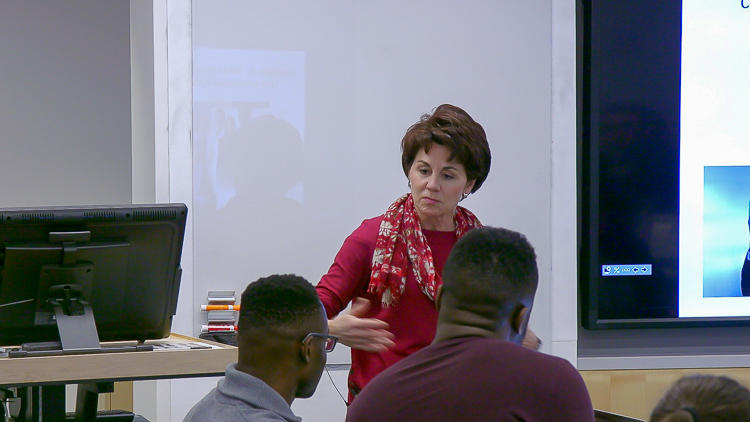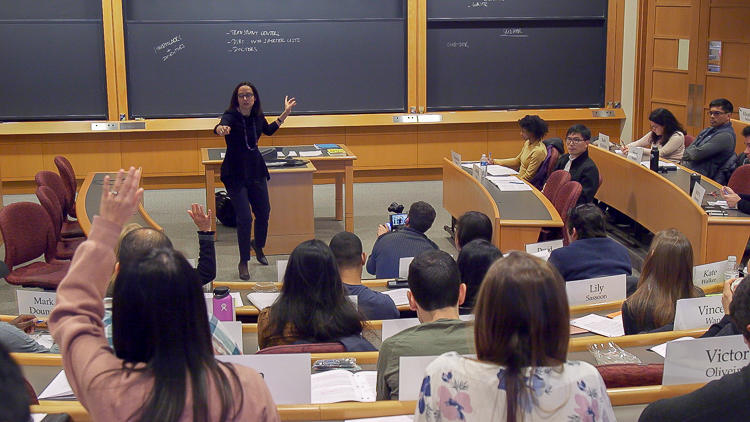Though small group time is student time, instructors can glean important information about student learning by strategically eavesdropping. In this video, Barbara Cockrill reflects on her rationales for continually circulating during small group case discussions. Among those discussed are listening for and addressing misconceptions, priming particular groups to share out during subsequent whole group dialogues, and finding an opportunity to spotlight quiet students.
Circulating the room during small group case discussions
Instructor
Barbara Cockrill, Harold Amos Academy Associate Professor of Medicine
Student Group
Graduate
School
Harvard Medical School
Course
Homeostasis I
Group Size
40 students
Additionals Details
First-year requisite
- Circulate continuously to keep abreast of each group’s progress. Listening in on students as they wrestle with content together can provide valuable feedback about their understanding and help you decide when to move the case along.
- Listening to small group discussions can also help you determine what students are struggling with and what misconceptions might be emerging. When you reconvene as a full group, you can then raise these misconceptions directly and reteach as needed.
- You might also move around the room to encourage or select specific students or groups to share when the class returns as a full unit. This offers students forewarning to prepare their thoughts in advance.
- Indicators of instructor enthusiasm, such as movement, are correlated with student engagement (Keller et al., 2016).
- Wolfe argues that the brain is primed to pay attention to movement, suggesting moving in the classroom could improve students’ alertness (2001).
- In the video “Listening at Four Levels,” Harvard Business School professor David Garvin provides an outline for what instructors should be listening for as they listen to student conversations.
- Check out how another Instructional Moves featured faculty member Dan Levy thinks about moving strategically in his classroom.




